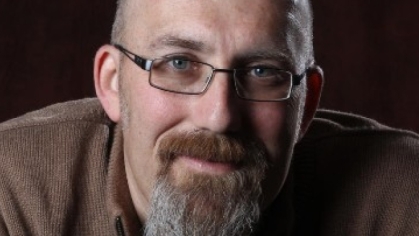Why Is There A Gap in the Manhattan Skyline? Don't Blame the Bedrock; It’s Location, Location, Location!
Rutgers Professor’s Research Debunks A Popular Misconception
Rutgers-Newark economist Jason Barr is a “mythbuster,” but unlike television’s MythBusters team, the economics professor is not blowing up anything. Instead, Barr’s research is demolishing a long-held, but erroneous, idea about the “valley” between the skylines of upper and lower Manhattan. There are few skyscrapers between mid-town and down-town Manhattan, goes the conventional wisdom, because the bedrock is too deep below the street to anchor high-rise towers to it.
According to Barr, “Everybody is looking at this backwards. It’s not an issue of supply, of where you can build. It’s an issue of demand, or where you want to build.” Manhattan’s skyscrapers are clustered together in two areas: midtown, where the bedrock is within several feet of the surface, and the downtown group, where the bedrock again is fairly close to street level, near Wall Street. For many years, the “valley” in the famous Manhattan skyline was linked to the location of the bedrock needed to anchor skyscrapers. If the bedrock is too deep, it was argued, it was an economic barrier to construction because of the costs of anchoring a building so far below the surface.

Barr calls this “folklore.” Barr, who confesses to a longtime interest in urban architecture and has taught about urban economics and urban development at Rutgers-Newark, began analyzing data on skyscraper construction about six years ago. Now he is co-author of a study that attacks the old belief that bedrock’s depth determines location of a skyscraper. “Our results showed that bedrock had, at most, a small effect on the formation of the skyline,” he says. Instead, he says, economics is the real driving force, in the form of “location, location, location.”
“Real estate developers built skyscrapers to be near already established centers of commerce, where public transportation was easily accessible, and away from slums and manufacturing districts,” say Barr and his co-authors, Troy Tassier, an associate professor at Fordham University; and Rossen Trendafilov, a teaching fellow at Fordham. Their study, published in December 2011 in The Journal of Economic History, analyzes 173 random core samples from the Battery to Central Park South. The researchers found no correlation between the depth of bedrock and the likelihood of a skyscrapers construction (their study defined a skyscraper as a building at or above 18 stories, which was tall for the time when the city’s two business districts developed between 1890 and 1915.)
What Barr and his co-authors did discover was that some of the tallest buildings of their day were built between City Hall, where the bedrock is very deep, about 45 meters down. The study notes that New York World Building, a 349-foot tower, went up at 99 Park Row, near the lowest point, followed a decade later by the Woolworth building.
Barr says that developers didn’t shy away from the valley because of the costs, but just the opposite: they were responding to the migration, building where corporations and businessmen wanted to be located. He explains that middle-class workers and the wealthy didn’t want to work near slums and higher crime areas, so they went north –and so did the companies which employed them and the tall buildings those companies constructed as headquarters.
After studying historical construction data, the researchers calculated that at the most, deep bedrock would add about seven percent to the costs of a building. “Compared to the cost of land in Manhattan, that amount is miniscule. Because of differences in land prices across the city, a developer could have easily purchased cheap land in the bedrock valley, paid the 7% increase in construction costs, and saved large sums of money on the total project cost, ” according to Barr.
“Buildings get built where and when there is demand,” he states. “It is not a case of ‘build it and they will come.’”
Media who would like to speak with Barr should contact Carla Capizzi, 973/353-5263.


